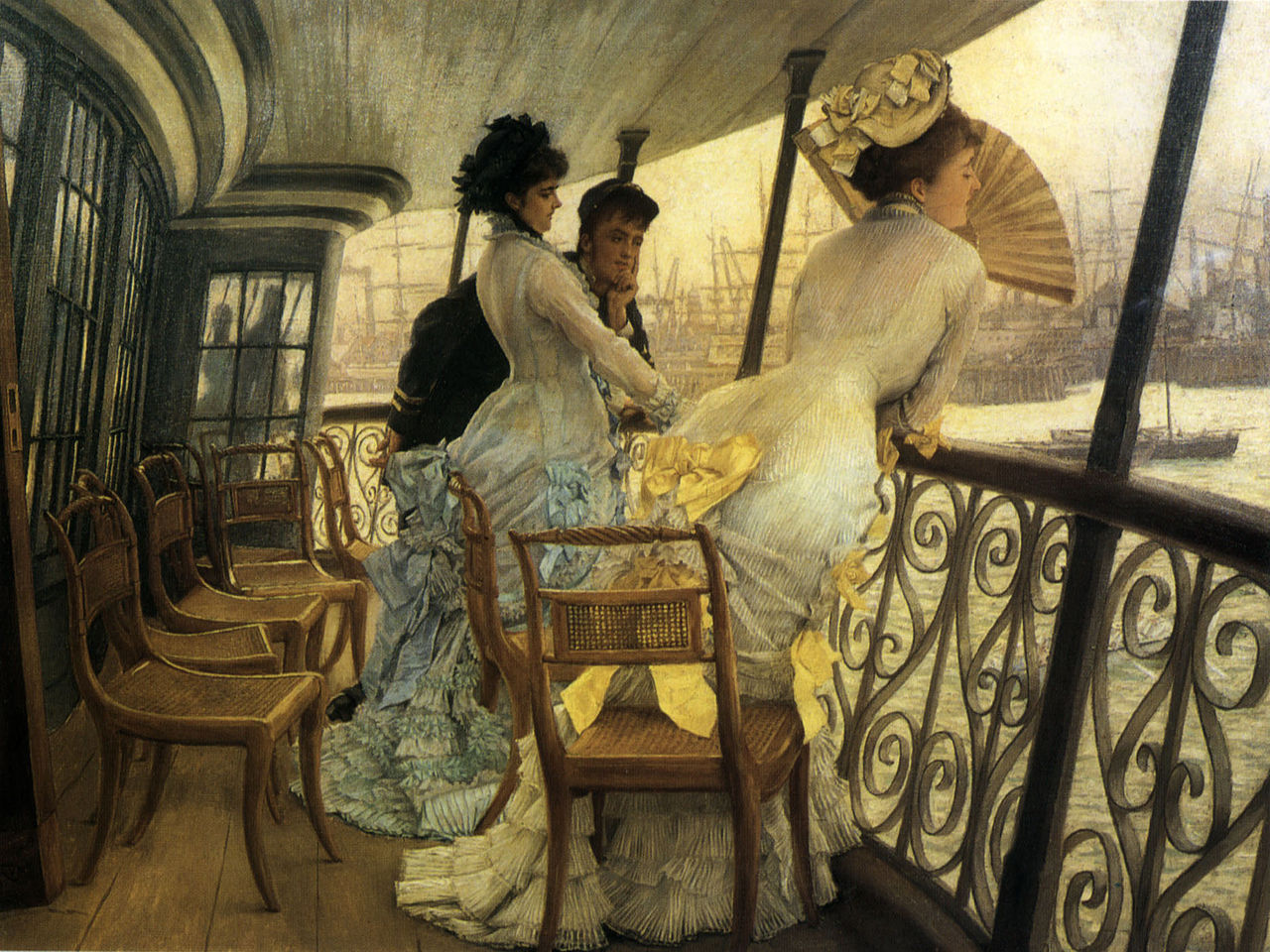From JSTOR:

Victorian women in dresses with bustles,
The Gallery of HMS Calcutta (Portsmouth) by
James Tissot (1876)
When you think of a Victorian woman, she is likely wearing a dress
covered in a pretty print. That dress was likely made of calico, which
took the newly industrial world by storm. But was the pattern on her
dress pirated? It’s possible—and as Lara Kriegel writes, battles over bolts of fabric shook Britain during the nineteenth century.
The problem was in the prints that covered the textiles. Calico
itself—a bright kind of cotton cloth—was ripped off from Indian weavers,
and once it began to be produced in Britain it “sparked a fashion
craze.” Suddenly, women could wear fabrics of all colors and
patterns—and in turn, manufacturing that cloth helped change the
country’s landscape. Soon, mills dotted England, and many of them
produced miles of printed calico.
But the designs they printed were often stolen from one another.
Country calico makers ripped off city printers, and industry turned to
government to beg for regulation. “Honest printers found themselves
daily at the mercy of pirates who could foist designs on the market with
staggering and unprecedented speed,” writes Kriegel. It was the
nineteenth-century version of Forever 21 knocking off designer clothing....MORE
 Victorian women in dresses with bustles, The Gallery of HMS Calcutta (Portsmouth) by James Tissot (1876)
Victorian women in dresses with bustles, The Gallery of HMS Calcutta (Portsmouth) by James Tissot (1876)